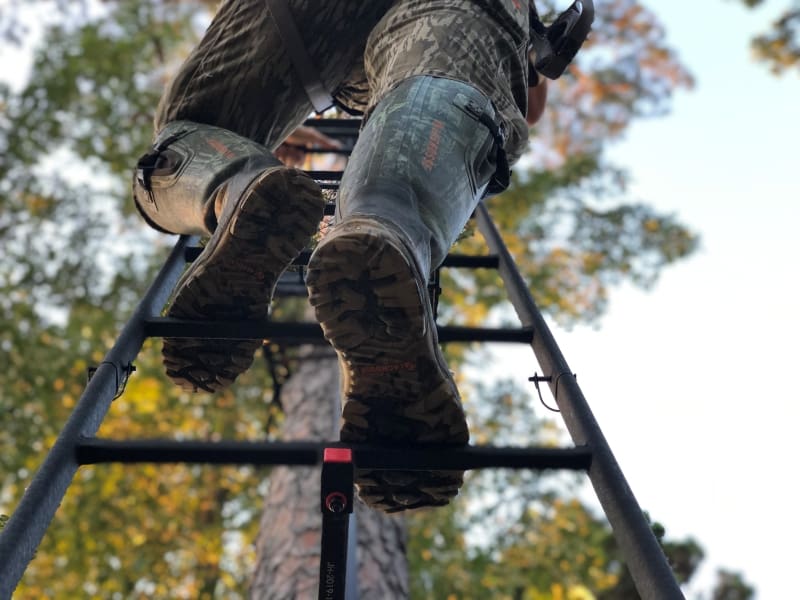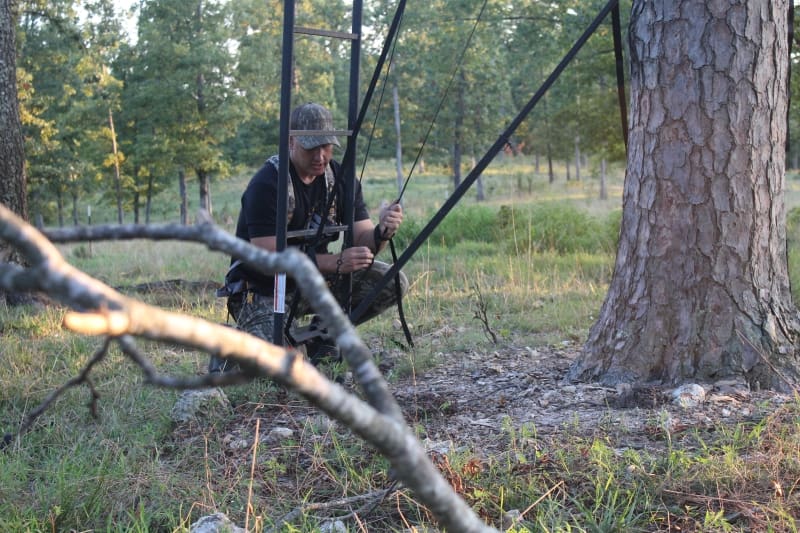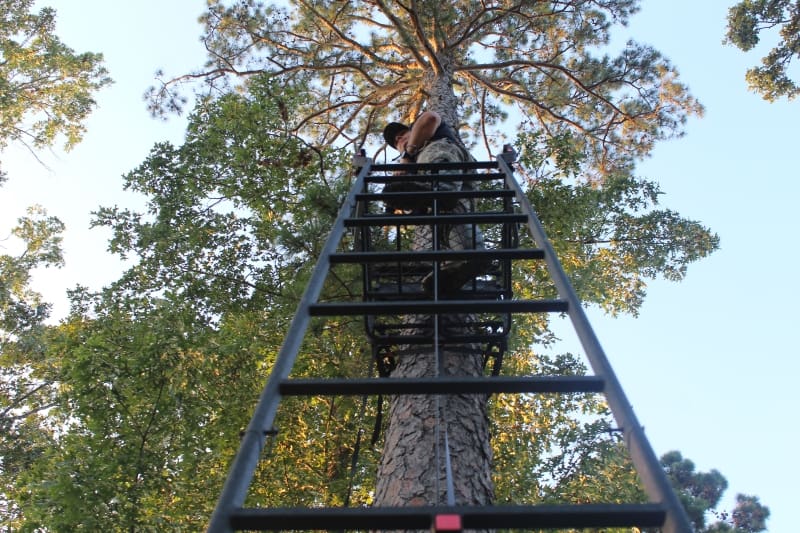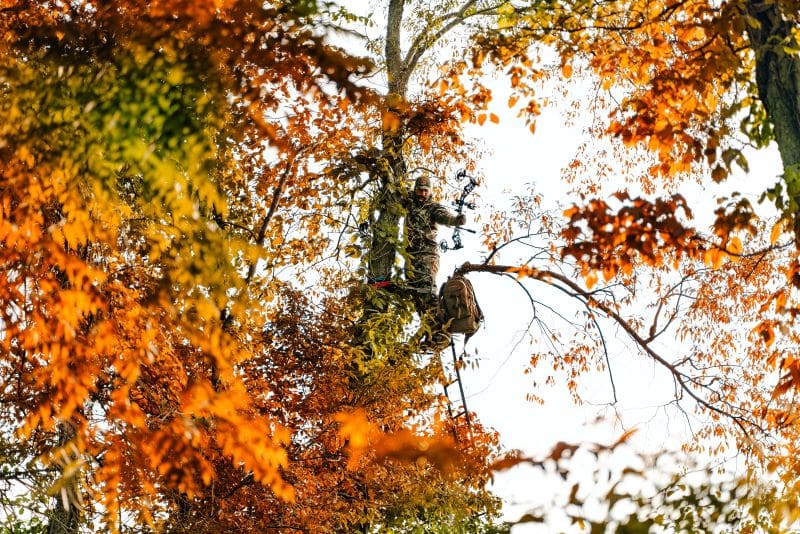As hunting season draws near or has already started in some areas, many hunters are finishing up their preparations, often with one final task left: making sure their treestands are ready for action.
While it’s ideal to have stands set well before the season, there are valid reasons for adjusting placement or performing maintenance just before opening day or during the early weeks of the hunt.
A few years ago, I acquired a new property for bowhunting. Throughout the hot summer months, I dedicated countless hours to running trail cameras, scouting, hanging stands, and doing everything necessary to ensure I could harvest a mature buck on opening day. A few weeks before my first hunt, I decided to stay out of the area entirely until it was time to hunt. When the day finally arrived, I patiently waited in my stand to see if the first light would reveal any deer. To my disappointment, as dawn broke, I spotted another hunter sitting about a hundred yards away, right on the fence line of the neighboring property. Since he was on his side, I didn’t confront him. I hunted for a few more hours but returned midday to move my stand elsewhere, so much for trying to stay out of the area. Unfortunately, last-minute adjustments to treestand locations are sometimes necessary to overcome unexpected situations that can ruin your chances at a big buck.

Why Move Your Treestands Last Minute?
Real-time information can justify a move even if you’ve already done your preseason scouting and placed your stands.
Evolving Deer Patterns: Early season scouting or trail camera footage might reveal changes in deer movement that differ from what you expected. Whitetails, in particular, may shift their feeding or bedding areas due to changes in food sources, human pressure, or weather. If you notice new travel routes, adjusting your tree stand could put you in a better position to intercept a mature buck.
Wind and Weather Changes: Optimal tree stand placement often depends on prevailing wind directions to prevent scent detection. Last-minute weather changes could force you to move your stand to maintain a favorable wind. If the wind isn’t in your favor, even the best stand location could be compromised by deer catching your scent before you even see them.
Pressure from Other Hunters: On public land, in heavily hunted areas, or when just two hunters in a large area choose the same spot—like in my case—other hunters can unintentionally pressure deer to alter their movement patterns. If you notice increased human activity in the area, repositioning your stand to a less pressured spot can improve your odds of encountering a mature buck. This could mean moving closer to thicker cover where deer retreat or shifting to more secluded feeding areas.
Fresh Sign: Even after the season begins, fresh rubs, scrapes, or heavy trails could indicate the presence of a mature buck. Last-minute adjustments based on hot sign can lead to high-reward hunts. If you find a big rub line or a scrape that wasn’t there a week ago, you might want to relocate to capitalize on that sign.

Key Safety Checks for Your Treestands
Safety is paramount when using tree stands; last-minute inspections can prevent accidents. Here are some vital maintenance tasks.
Inspect Straps and Cables: Over time, the elements can degrade the materials of your tree stand straps and cables, leading to potential failure. Check all ratchet straps, chains, or cables for wear and tear, fraying, or rust. Replace anything that shows signs of weakness.
Check for Stability: Ensure that your stand is still secure. Trees grow and shift, and your stand might become loose or uneven over time. Double-check the tightness of your stand to the tree, ensuring it won’t move or make noise when weight is applied.
Lubricate Moving Parts: Check any moving parts of your tree stand, like the seat or platform, for squeaks or stiffness. A noisy stand can disrupt your hunt. Use lubricant to ensure everything moves quietly and efficiently.
Test the Stand: Before the season starts or after repositioning a stand, it’s a good idea to climb up and test the setup while wearing your safety harness. This will let you check for any noise and ensure that your stand is level and secure under your weight.
Clear Shooting Lanes: If you’ve moved a stand or haven’t hunted from a spot in a while, make sure to clear any new branches or obstacles that could interfere with your shot. Mature bucks often take paths that offer more cover, so ensure you have clear lanes to shoot through without excessive movement.
Safety Harness and Lifeline: Never overlook your personal safety. Ensure your safety harness is in good condition and fits properly. Lifelines should also be set up for easy attachment to your harness, offering protection from the moment you leave the ground.

Ensuring Your Stand Is in the Right Place
You could have the safest, best-maintained stand in the woods, but your chances of seeing a mature buck decrease if it’s not in the right spot. Consider these factors when choosing your final placement.
Travel Corridors: Bucks, especially during the rut, move along established travel corridors to search for does. If you can set up along one of these, you’ll have better odds of a shot at a mature buck. Pay attention to funnel areas like narrow strips of woods between fields, saddles in ridges, or pinch points along water sources.
Food Sources and Bedding Areas: Early in the season, bucks focus on food, transitioning to rutting behavior later. Placing your stand near early-season food sources like acorns, soybeans, or apples can be highly effective. If you’re near where deer are feeding or bedding without intruding on those spaces, you can catch them moving during daylight hours.
Cover and Concealment: Mature bucks are wary, especially in areas with hunting pressure. Your stand should offer enough cover to keep you concealed from their sharp eyes but also give you enough vantage to spot approaching deer. Situating your stand within thick cover or up against a tree with many branches can help break up your outline.
Last-minute tree stand maintenance and placement can make or break your season. There is nothing worse than being in your stand on a perfect morning when hunting is prime, only to find yourself wondering if you are in the wrong spot or if there is a better location nearby. You can increase your chances of success by staying flexible yet keeping safety at the top of the list and paying attention to evolving deer patterns. A well-placed stand with a safety-first approach ensures you’ll be ready when that mature buck steps into range.


